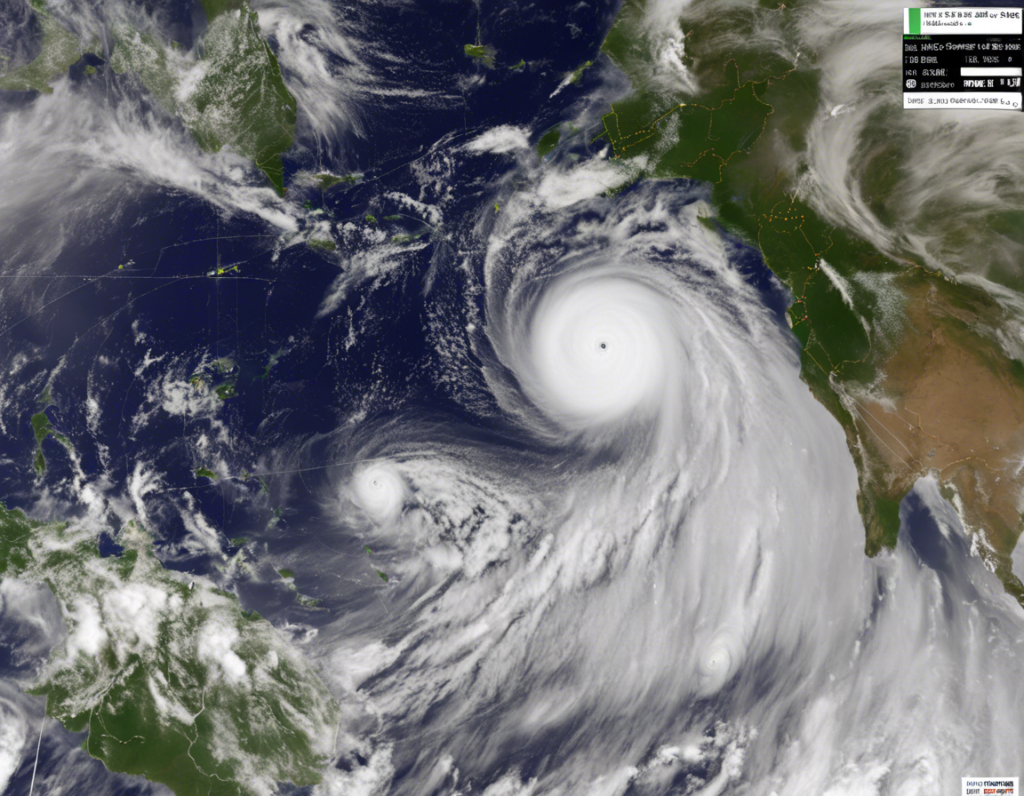As Cyclone Michaung rapidly approaches the coastlines, the importance of real-time tracking and monitoring cannot be overstated. With lives and properties at stake, having access to the latest updates and information is crucial for preparedness and response efforts. In this blog post, we will delve into the significance of tracking Cyclone Michaung, the tools and technologies used for monitoring, and how you can stay informed through live satellite updates.
The Impact of Cyclones
Cyclones, also known as hurricanes or typhoons, are powerful storms that can cause widespread destruction through strong winds, heavy rainfall, storm surges, and flooding. These natural disasters pose a significant threat to coastal regions and can result in loss of life, infrastructure damage, and disruption to essential services. Cyclone Michaung is no exception, and vigilance is key to mitigating its impact.
Importance of Tracking Cyclones
Tracking Cyclone Michaung allows authorities and residents in potential impact zones to make informed decisions regarding evacuation, emergency preparedness, and resource allocation. By monitoring the cyclone’s path, intensity, and speed, meteorologists can provide early warnings and forecasts to help communities brace for the impending impact. Timely information can save lives and reduce the overall damage caused by the storm.
Tools for Monitoring Cyclones
Satellite Technology
Satellites play a crucial role in monitoring cyclones by providing real-time imagery, data, and observations from space. Satellite technology offers a comprehensive view of the cyclone’s development, movement, and structure, enabling meteorologists to track its trajectory and predict its behavior with greater accuracy. By leveraging satellite data, forecasters can issue timely alerts and guide response efforts effectively.
Radar Systems
Radar systems on the ground provide detailed information about the inner workings of a cyclone, including its eye, eyewall, and rain bands. Radar data supplements satellite imagery by offering high-resolution insights into the storm’s dynamics, precipitation patterns, and intensity fluctuations. This dual monitoring approach enhances forecast models and improves the overall predictive capabilities for cyclones like Michaung.
Live Satellite Updates for Cyclone Michaung
To stay informed about Cyclone Michaung’s progression and impact, it is essential to access live satellite updates from reputable sources. Websites and platforms offering real-time satellite imagery, storm tracking, and weather alerts can be valuable resources during such events. By monitoring these updates, you can track the cyclone’s path, anticipate severe weather conditions, and take necessary precautions to safeguard yourself and your loved ones.
Key Information to Look for in Live Updates:
- Cyclone Position: Track the cyclone’s current location and movement in real time.
- Intensity: Monitor changes in the cyclone’s strength and wind speeds.
- Forecast Path: Stay updated on the projected path and potential landfall locations.
- Rainfall Patterns: Keep an eye on the distribution of heavy rainfall and potential flooding areas.
- Storm Surge Alerts: Be aware of coastal areas at risk of inundation due to storm surges.
By regularly checking live satellite updates and heeding official warnings, you can stay ahead of the storm and make informed decisions to protect yourself and your community.
Frequently Asked Questions (FAQs)
1. What is the difference between a cyclone, hurricane, and typhoon?
- Answer: The terms cyclone, hurricane, and typhoon refer to the same weather phenomenon but are used in different regions. Cyclones occur in the South Pacific and Indian Ocean, hurricanes in the Atlantic and eastern Pacific Ocean, and typhoons in the western North Pacific Ocean.
2. How are cyclones classified based on intensity?
- Answer: Cyclones are classified into categories based on their maximum sustained wind speeds. The Saffir-Simpson scale is commonly used to categorize hurricanes, ranging from Category 1 (weakest) to Category 5 (strongest).
3. What is the eyewall of a cyclone?
- Answer: The eyewall is the region of intense thunderstorms surrounding the eye of a cyclone. It is where the strongest winds and heaviest rainfall are typically found, making it the most dangerous part of the storm.
4. How do satellites help in tracking cyclones?
- Answer: Satellites provide valuable data on a cyclone’s location, size, structure, and movement. This information is essential for forecasting its path, intensity, and potential impact on coastal areas.
5. What precautions should I take during a cyclone?
- Answer: During a cyclone, it is crucial to stay indoors, away from windows, and in a secure location. Stock up on essential supplies, follow evacuation orders if issued, and keep abreast of official updates and warnings.
In conclusion, tracking Cyclone Michaung through live satellite updates is vital for staying informed, prepared, and safe during this natural disaster. By leveraging the latest technologies and resources available, we can enhance our resilience and response to such extreme weather events. Stay vigilant, stay safe, and stay connected to reliable sources for real-time information on Cyclone Michaung.
